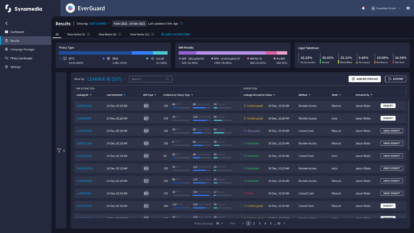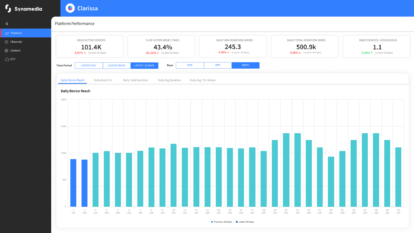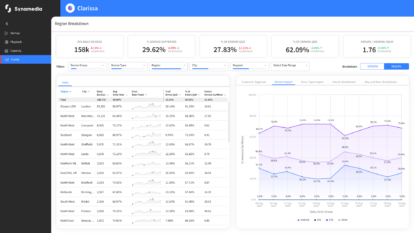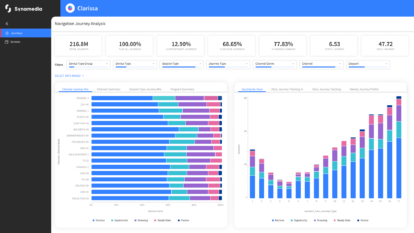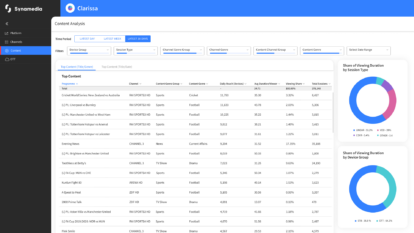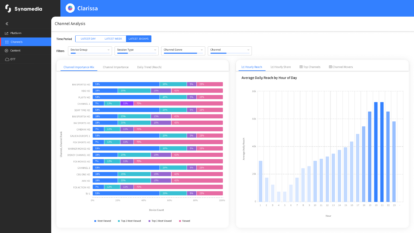Make no mistake, the ATSC 3.0 transition (AKA Next Gen TV) is going to be a massive, exciting shift for consumers.
Better sound, high dynamic range (HDR), wide color gamut (WCG) and higher frame rates are all going to play their role in giving people a much better viewing experience.
But there’s a much bigger shift coming for broadcasters like you – and most consumers will barely notice it.
That’s the relatively gigantic shift your video networks will need to make to take full advantage of these new standards.
More specifically, you’re going to need your network to change in three big ways.
- You’ll need your video network to encode video differently.
The first time people realize they can watch the content they love on any device, anywhere, they get excited. The second time they watch it, they get used to it. And so just as soon as you establish a new standard, you also establish new expectations around video quality and latency.
To maintain those levels of quality when you bring together over-the-air (OTA) broadcast and broadband, you need the next generation of compression technology. That is, you need an encoding platform that can both optimize existing codecs and develop next-gen codecs.
Constant quality encoding for streaming is a new approach designed to account for the infinite complexity and constant evolution of content today.
What it means is you can specify the quality level that matters to you and maintain it throughout the encoding process, adjusting the bit rate and size of the video – instead of having a constant bit rate and variable quality.
The result is a more consistent streaming experience that doesn’t compromise on quality and improves your bandwidth efficiency and storage costs.
- You’ll need to migrate to software-defined video processing.
Broadcasters are going to need to maintain ATSC 1.0 feeds for at least five years when they make the switch to ATSC 3.0. That’ll gradually affect the quality of 1.0 signals as multiple channels get stacked with lower definitions under one tower.
To get the balance between both standards right, broadcasters are going to need a more agile system. Which is where software-defined media processing comes in.
Cloud-based architectures will help to avoid quality repercussions over time. But they’ll also make the business more flexible—by automating manual workflows and removing geographic dependencies.
That means your technical talent doesn’t have to spend all its time managing infrastructure – they can focus on more important areas like customer experience.
(For what it’s worth, you’ll save them even more time if you use a single, unified platform rather than several custom appliances – but that depends on the architecture that works for you.)
- You’ll need to use a more scalable content delivery network (CDN).
The ATSC 3.0 rollout is going to make it more important for broadcasters to offer linear broadcasts and simulcasts.
That’s because audiences will expect a seamless viewing experience between television (OTA) and OTT delivery—freely switching between the two to suit their in-the-moment needs. And keeping factors like quality and latency consistent, wherever viewers watch from, represents a big challenge.
The trouble is that conventional CDNs aren’t suited to deliver that kind of cross-device reliability—particularly around larger-scale live events. And given that live-local content programming is one of the last remaining areas in which broadcasters have a clear advantage over pure-OTT players, it’s a crucial issue to resolve.
To protect and leverage live-local to its full potential in an ATSC 3.0 world, broadcasters need a rock-solid delivery network, via an uncontested CDN, with multicast capabilities to the home.
Next-gen TV starts with next-gen video networks
ATSC 3.0 is going to be a big shift for consumers which means it’s a big opportunity for broadcasters.
But at the end of the day, if you don’t have a video network designed to make the most of these new standards, you just won’t be able to deliver the ultra-HD multi-screen experiences with immersive sound that people want.
So as exciting as the transformation looks from the outside, the really exciting stuff is actually happening on the inside.
For more information on these and other complex stages that will ultimately affect the customer experience in the Next Gen TV rollout, take a look at our ATSC 3.0 solution sheet.
About the Author
Bart is responsible for marketing Synamedia’s video network product and architecture portfolio, covering cloud, workflow automation, ABR technology and microservices. With over 20 years’ experience in the video industry, Bart demonstrates how Synamedia’s solutions and services help service providers to deliver premium video services securely and reliably to any screen.
Prior to joining Synamedia, Bart spent 12 years with Cisco, and before that was at Scientific-Atlanta, which was subsequently acquired by Cisco. Before that he held various engineering and product management roles.
Bart holds a Master of Science in Applied Engineering from the KaHo Sint-Lieven, currently University of Leuven, in Belgium.

